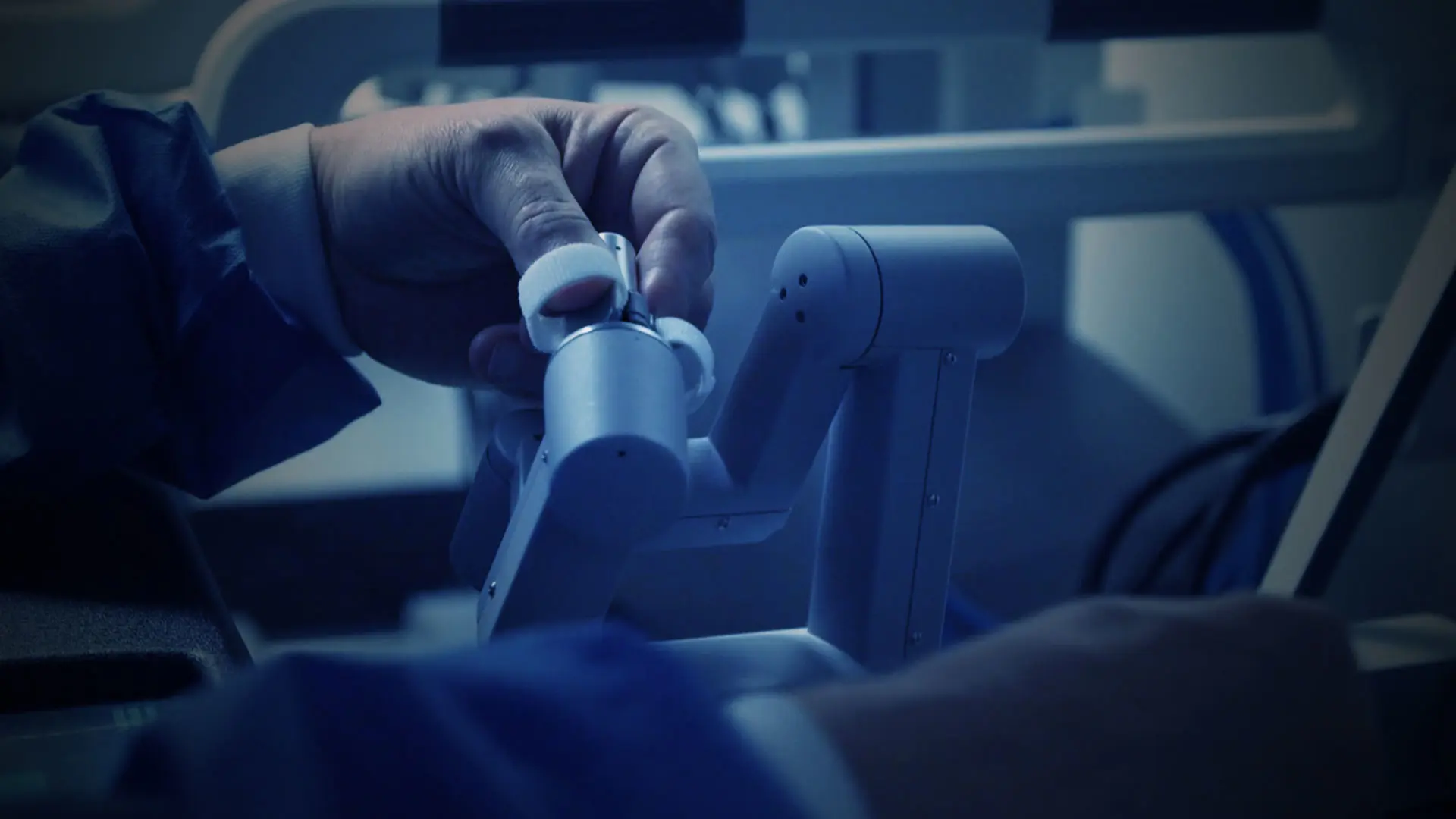For more than a decade, Ash Tewari, MBBS, MCh, FRCS (Hon.), Professor and System Chair, Milton and Carroll Petrie Department of Urology, has been a leader in advancing the safety and precision of robot-assisted radical prostatectomies (RARP) through both research and refinement of this procedure. His innovations have included nerve-sparing techniques and anatomical models that have optimized both oncological outcomes and maintenance of continence and sexual function among patients.
That pioneering work is reflected in two new studies that have identified biomarkers for cancer aggressiveness and clinical outcomes and assessed the efficacy and safety of a new approach to prostatectomy that enhances postoperative sexual function without compromising surgical margin rates.

Ash Tewari, MBBS, MCh, FRCS (Hon.), Professor and System Chair, Milton and Carroll Petrie Department of Urology, Director of the Center of Excellence for Prostate Cancer at The Tisch Cancer Institute at the Icahn School of Medicine at Mount Sinai, and Surgeon-in-Chief of the Tisch Cancer Hospital at The Mount Sinai Hospital
Association Between Incidental Pelvic Inflammation and Aggressive Prostate Cancer
Although inflammation is a known driver of carcinogenesis—the initiation of cancer formation—the role of pelvic inflammation on prostate cancer aggressiveness and clinical outcomes among patients who have undergone radical prostatectomy has not been studied.
Seeking to fill this gap, Dr. Tewari led a first-of-its-kind retrospective study of patients who underwent robot-assisted laparoscopic prostatectomy (RALP) between January 2013 and October 2019 at Mount Sinai. The research team analyzed data from 2,085 patients to assess the association between pelvic inflammation and adverse pathology, which was defined as Gleason Grade Group > 2 and ≥ pT3 stage, at resection. In a subset of 1,997 patients, the association between pelvic inflammation and biochemical recurrence (BCR) was studied. The research team studied alterations in tumor transcriptome and inflammatory markers among patients who had and did not have pelvic inflammation using microarray analysis, immunohistochemistry, and culture supernatants derived from inflamed sites used in functional assays. Changes in blood inflammatory markers among the study cohort were analyzed by O-link.
Through univariate analysis, Dr. Tewari and the research team observed that pelvic inflammation was a significant predictor of advanced prostate cancer. Prostate cancer patients who presented with inflammation had elevated expression of inflammation-associated genes and cancer-driving pathways in their tumors. Increased systemic inflammation with activation of the IL6-STAT pathway—which plays a key role in the growth and development of many cancers—was observed among prostate cancer patients with pelvic inflammation. The presence of pelvic inflammation in prostate cancer patients suggests aggressive disease with a potential to develop biochemical recurrence and metastasis. The findings also suggest that prostate cancer patients with pelvic inflammation should be monitored for metastasis and that inhibition of the IL6-STAT pathway would benefit these patients.
“We have observed that prostate cancer patients with adhesions or scar tissues had a higher likelihood of aggressive disease,” says Dr. Tewari, who is also Director of the Center of Excellence for Prostate Cancer at The Tisch Cancer Institute at the Icahn School of Medicine at Mount Sinai and Surgeon-in-Chief of the Tisch Cancer Hospital at The Mount Sinai Hospital. “With further in-depth analysis, we discovered that pelvic inflammation is a driver of aggressive prostate phenotype. Until now, chronic inflammation within the prostate was considered a significant contributor to prostate cancer progression. However, our studies, for the first time, demonstrate that inflammation away from the prostate could be equally important. Therefore, managing inflammation in high-risk prostate cancer patients is critical and could be achieved by diet and other intervention strategies.”
“This study fundamentally contributes to the growing literature demonstrating inflammation’s negative impact on cancer progression,” says Dimple Chakravarty, PhD, Assistant Professor of Urology at Icahn Mount Sinai. “Our study in a large cohort of patients provides mechanistic insights that could explain how pelvic inflammation contributes to prostate cancer progression and biochemical recurrence. We are pursuing multi-institutional collaborations to validate our findings in other cohorts. Our long-term objective is to develop blood- or urine-based biomarkers to monitor inflammation status in our prostate cancer patients.”
The study was published in Cancers in May 2022.
Saline-Assisted Fascial Engorgement Nerve Preservation Guided by Microultrasound During Robot-Assisted Radical Prostatectomy
Nerve sparing is crucial in maintaining continence and sexual function among patients who undergo radical prostatectomy. At the same time, tissue preservation must be carefully balanced against the risk of extracapsular extension (ECE). To better achieve these goals, Dr. Tewari led a study to assess the efficacy of an innovative nerve-sparing technique: saline-assisted fascial engorgement (SAFE) guided by micro-ultrasound (MUS).
In this pilot study, outcomes were analyzed from 36 potent patients (sexual health inventory for men [SHIM] ≥ 17) who underwent RARP by Dr. Tewari between October 2021 and January 2022 and who had a unilateral risk of ECE between 21 percent and 73 percent. The first 19 patients underwent standard dissection; the remaining 17 underwent SAFE. The SAFE nerve-sparing technique was performed in real time after the early release of the neurovascular bundle.
After identification of the plane between Denonvillier’s fascia and prostatic capsule, and starting from the apex toward the base, the patients were administered 20 mL of normal saline solution with a 22-gauge x 177.8 mm spinal needle. Creation of the surgical planes was facilitated by tailoring the SAFE technique according to the visualized integrity of the prostatic capsule with a transrectal MUS. Erectile function was assessed by SHIM score preoperatively six weeks and three months post-surgery. Continence rate was defined as completely pad-free.
Dr. Tewari observed that the patients who underwent the SAFE technique achieved higher SHIM scores at six weeks (p = 0.037) and three months (p = 0.016) follow-up. As per protocol, all patients received a phosphodiesterase type 5 inhibitor (PDE5i)—a therapeutic commonly used to treat erectile dysfunction—before and after surgery. No patients in the SAFE cohort required intracavernosal injections (ICI); two patients in the control group required ICI at three months follow-up. Dr. Tewari observed no difference in urinary continence (p = 0.75) between the cohorts. All patients had negative surgical margins in the final pathology analysis irrespective of the group.
“This study demonstrates that SAFE nerve preservation guided by MUS is a practical, harmless, and easy technique to perform,” Dr. Tewari says. “More important, it improves postoperative SHIM scores in patients at high risk for ECE without increasing positive surgical margin rates.”
The study was published in Videourology in August 2022.
![In the study, outcomes were analyzed from 36 potent patients (sexual health inventory for men [SHIM] ≥ 17) who underwent robot-assisted radical prostatectomy by Dr. Tewari between October 2021 and January 2022.](https://images.ctfassets.net/iujm5coq335o/1aIaxv7dJwzwiBhqi0jjWR/52da18a6af6a6f5c3311f77cd6cd4fd2/-URO2023-01--Image-4.png?fm=webp)
In the study, outcomes were analyzed from 36 potent patients (sexual health inventory for men [SHIM] ≥ 17) who underwent robot-assisted radical prostatectomy by Dr. Tewari between October 2021 and January 2022.

The study assessed the efficacy of an innovative nerve-sparing technique: saline-assisted fascial engorgement (SAFE) guided by micro-ultrasound.
